Sweet, juicy, and deliciously golden orange, apricots are a great first food to serve to babies and toddlers. High in fiber, antioxidants, and vitamins A and C, apricots are a nutritious fruit that can be served plain, pureed, and mixed into yogurt or blended into smoothies. Great for 6+ months.
Medically reviewed and cowritten by Jamie Johnson, Registered Dietitian Nutritionist (RDN), and Lauren Braaten, Pediatric Occupational Therapist (OT).
Apricot Baby Food
Apricots are a powerful little fruit with a myriad of health benefits for your baby. They’re rich in antioxidants, vitamins A, E and C. Apricots are also high in fiber, which can support healthy digestion and relieve constipation.
Plus, apricots have a soft and juicy texture, similar to a peach’s. They’re a little bit sweet, a little bit tart, and slightly tangy, making them a great choice of fruits to serve to your baby to help expand their developing taste buds.
If you’re wondering how to serve apricot for baby-led weaning, we’ve got you covered. In this guide, we’ll cover all the information you need in order to safely serve apricot to your baby – nutritional benefits of apricot, FAQs, helpful tools, recipes, and expert feeding tips.
First time making homemade baby food? Then, I would suggest that you start by reading my very in-depth Guide on how to Make Homemade Baby Food – which goes over all the important information such as the best cooking tools to have on hand, safe storage, how to know when baby is ready for solids, how to introduce purees, the best first foods for baby, and more! If you are doing Baby-Led Weaning, then be sure to check out my Complete Guide to Baby-Led Weaning – which covers what exactly is baby-led weaning, to every parent’s concern of baby-led weaning and choking, this guide goes over it all. I will also share how to know when baby is ready for BLW, the top 10 best first foods, a helpful sample blw feeding schedule, helpful tools to have on hand, and much much more!
Want more information? Then make sure to check out my best-selling cookbook for even more information and recipes!
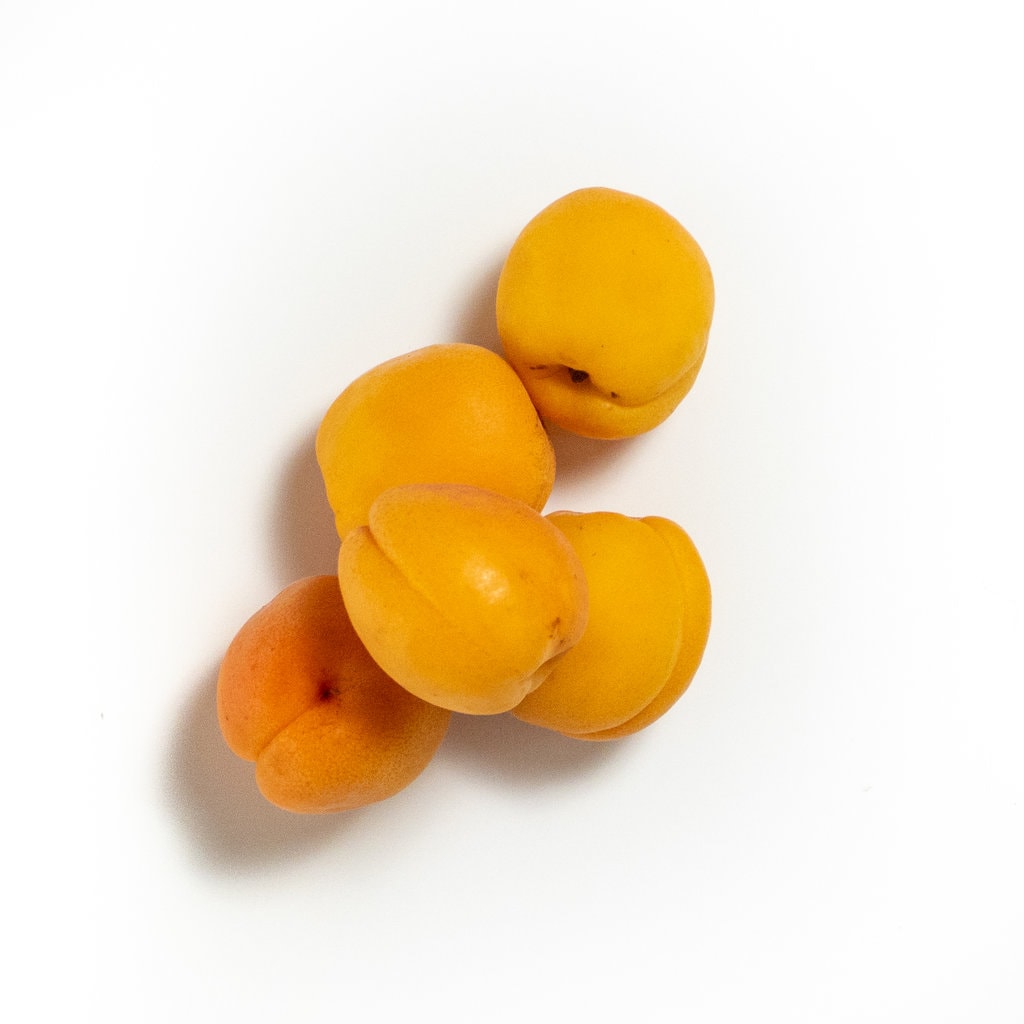
Reasons to Love Apricots for Babies
- delicious baby food purees – 6+ months
- great for baby-led weaning – 6+ months
- also great for the finger food stage – 9+ months
- full of essential nutrients for baby
- easy stage one and combination puree
- different ways for baby to eat – spoon-fed or self-feed
- easy to make
Benefits of Apricots
Apricots probably aren’t the first fruit that comes to mind when feeding your baby, but rest assured they are an excellent choice and full of nutrients!
- They are a good source of fiber for keeping the digestive system regular.
- Also a good source of vitamins A, C, and potassium- important for eye health, the immune system, and muscle function, respectively.
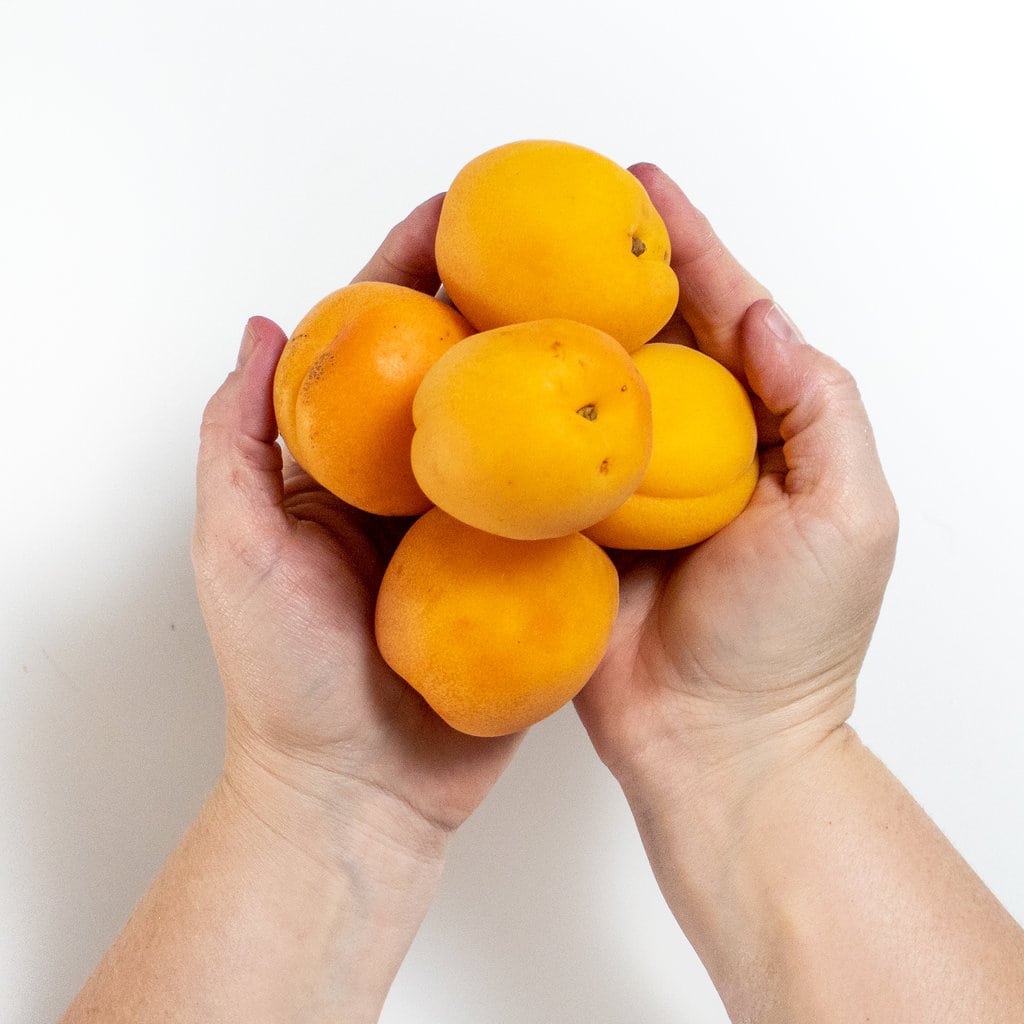
How to Pick Apricots
Apricots are in season for a limited amount of time, typically from mid-May to mid-August. Here are some pointers to look for when picking apricots:
- Color: Ripe apricots are orange-gold, with some hints of redness. Avoid those that are pale yellow or greenish-yellow.
- Texture: Look for apricots that are smooth and unwrinkled. They should feel firm to the touch but yield to slight pressure. Avoid those with cuts or shriveled skin, which usually indicates apricots that are overripe.
- Size: Ripe apricots are usually the size of a golf ball.
- Smell: A sweet aroma is a sign of ripeness.
Frequently Asked Questions
Apricots can be introduced to your baby as soon as they are ready to start solids, usually around 6 months of age.
No. Apricots are not typically a choking hazard when served ripe and appropriately sized. You will need to remove the apricot’s hard pit before offering it to your baby or toddler.
No, apricots are not a common allergen, but as with introducing any new food, always start with offering a small amount and monitor your baby for any adverse reactions.
Apricots are high in fiber, both soluble and insoluble, which can help prevent constipation. In fact, too many apricots can actually have a laxative effect, so start by offering a small amount and gradually increase serving sizes until you know how your baby responds.
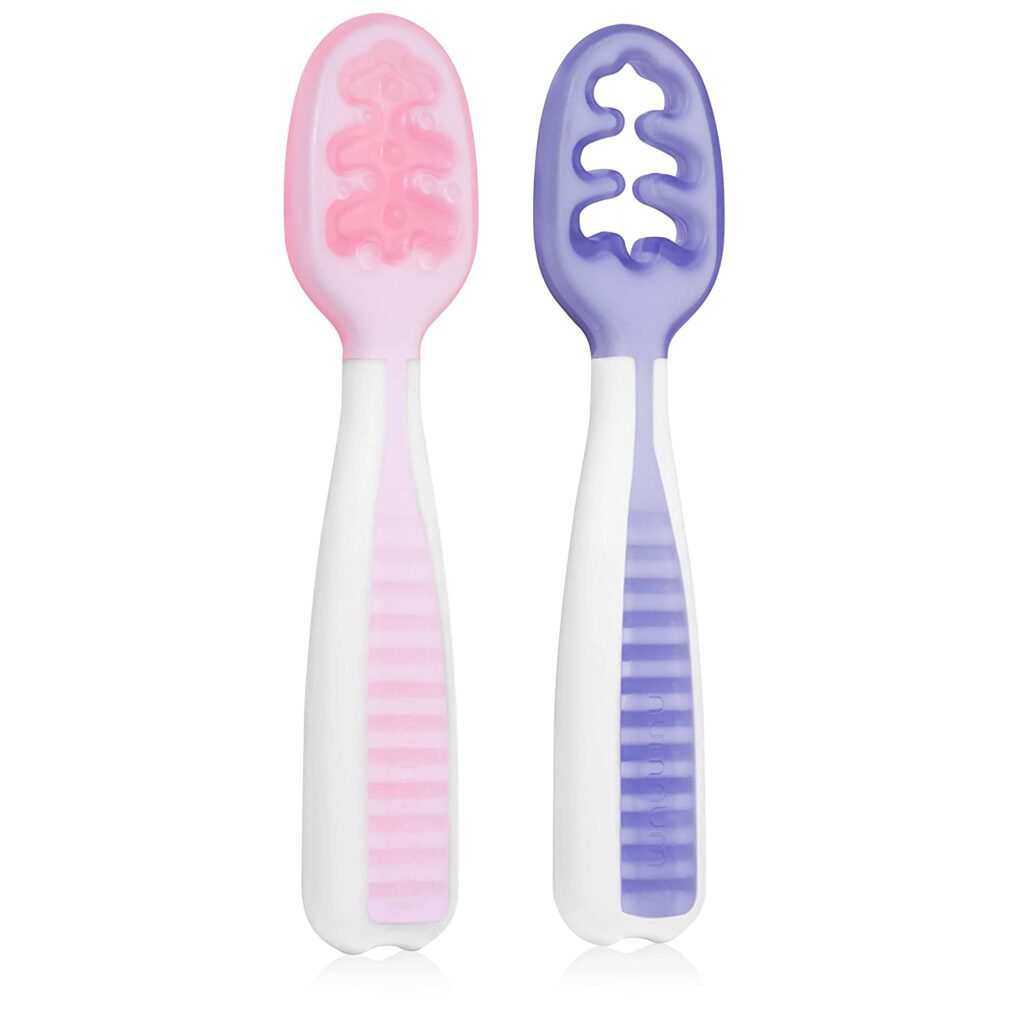
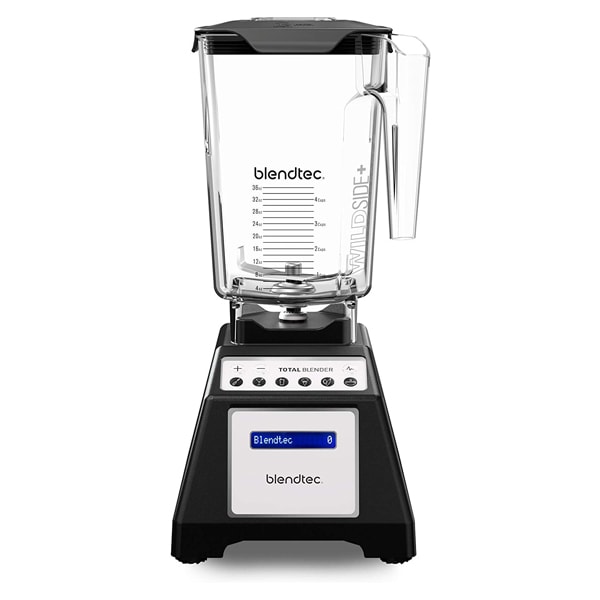
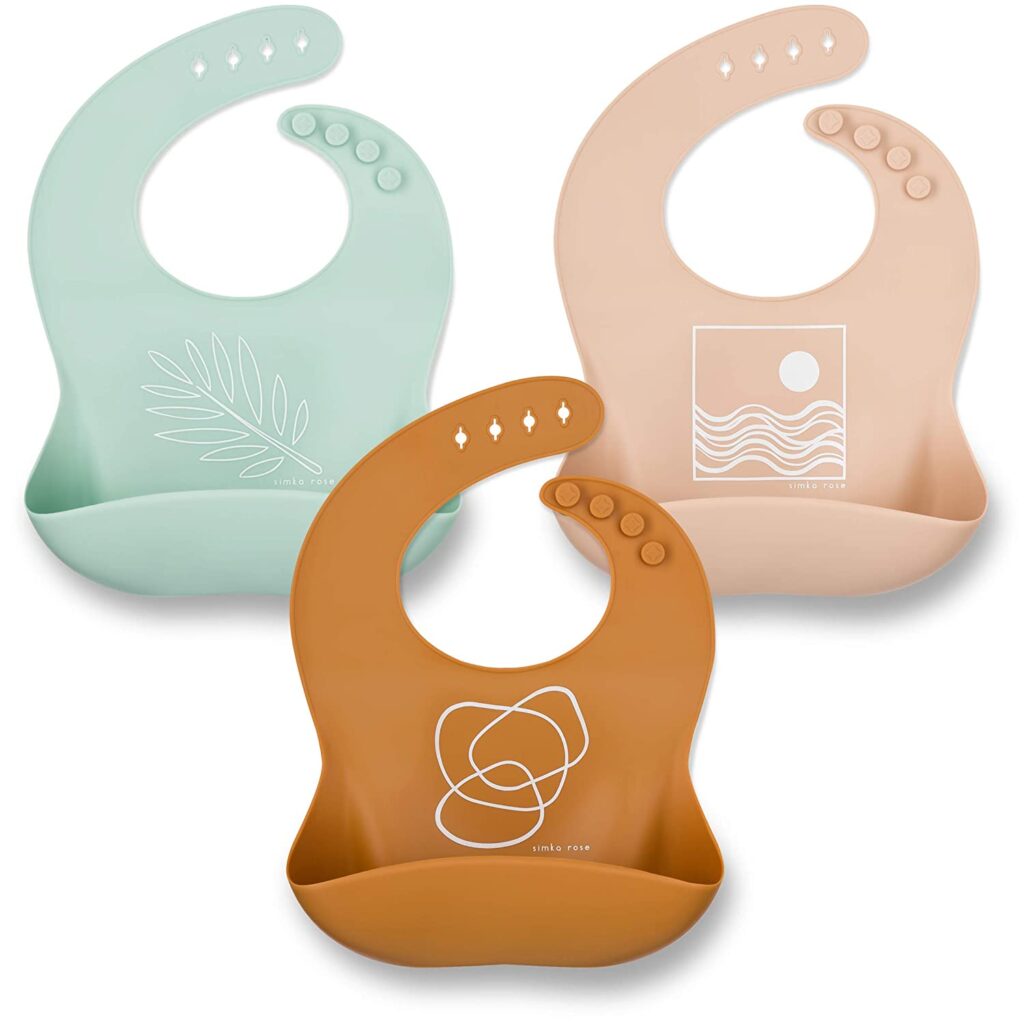
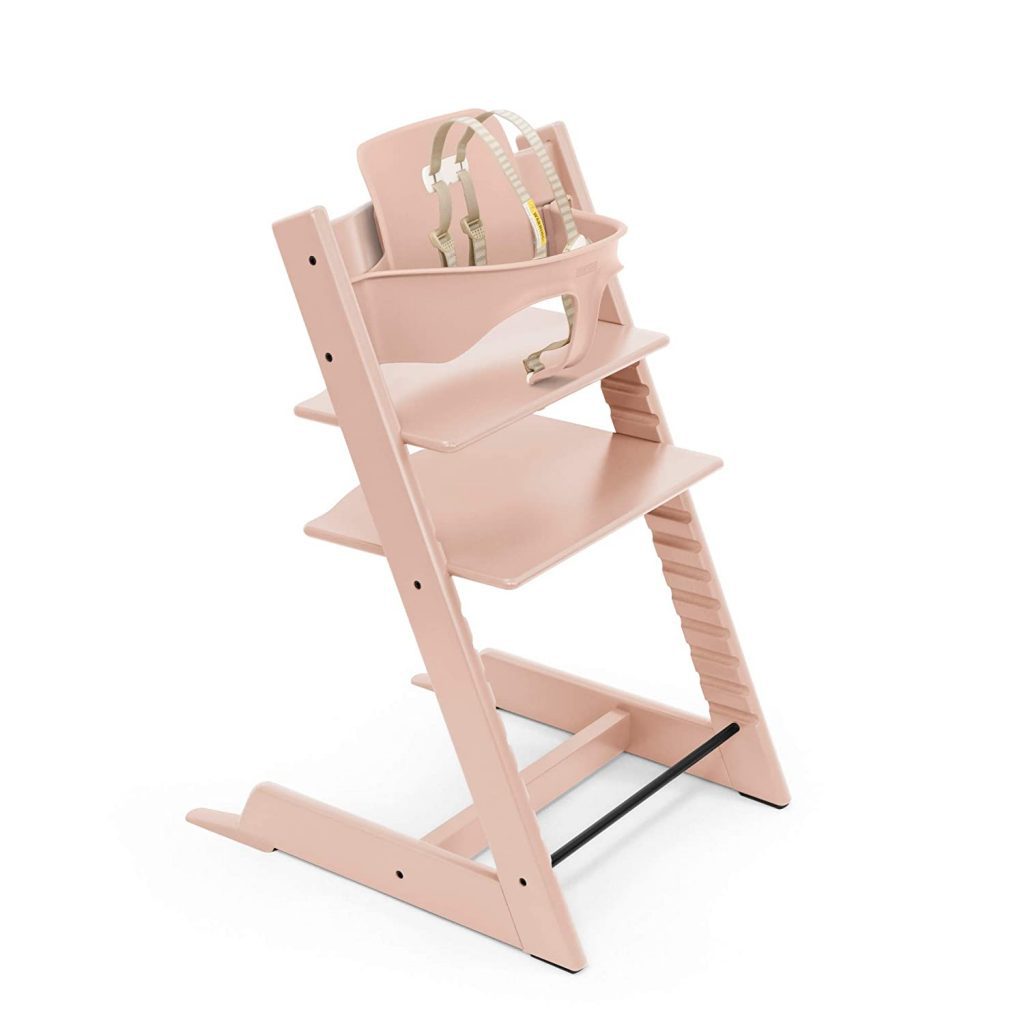
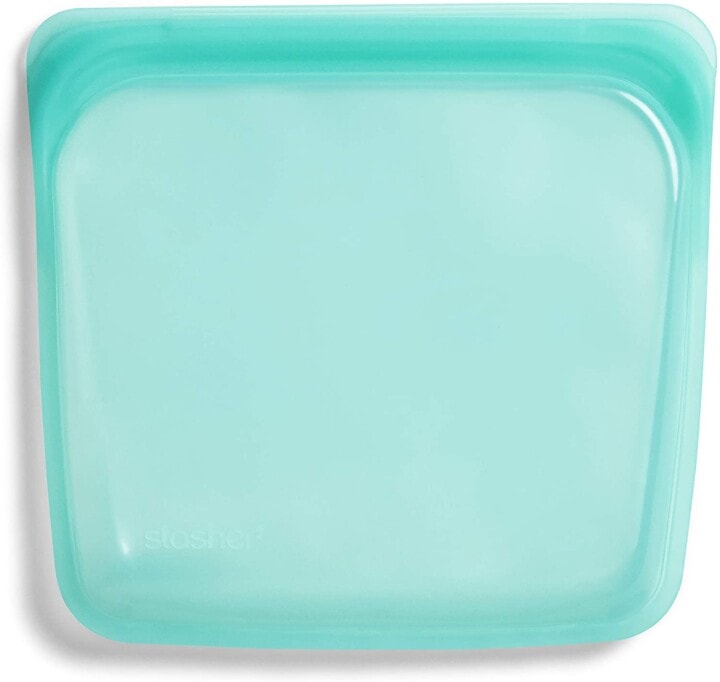
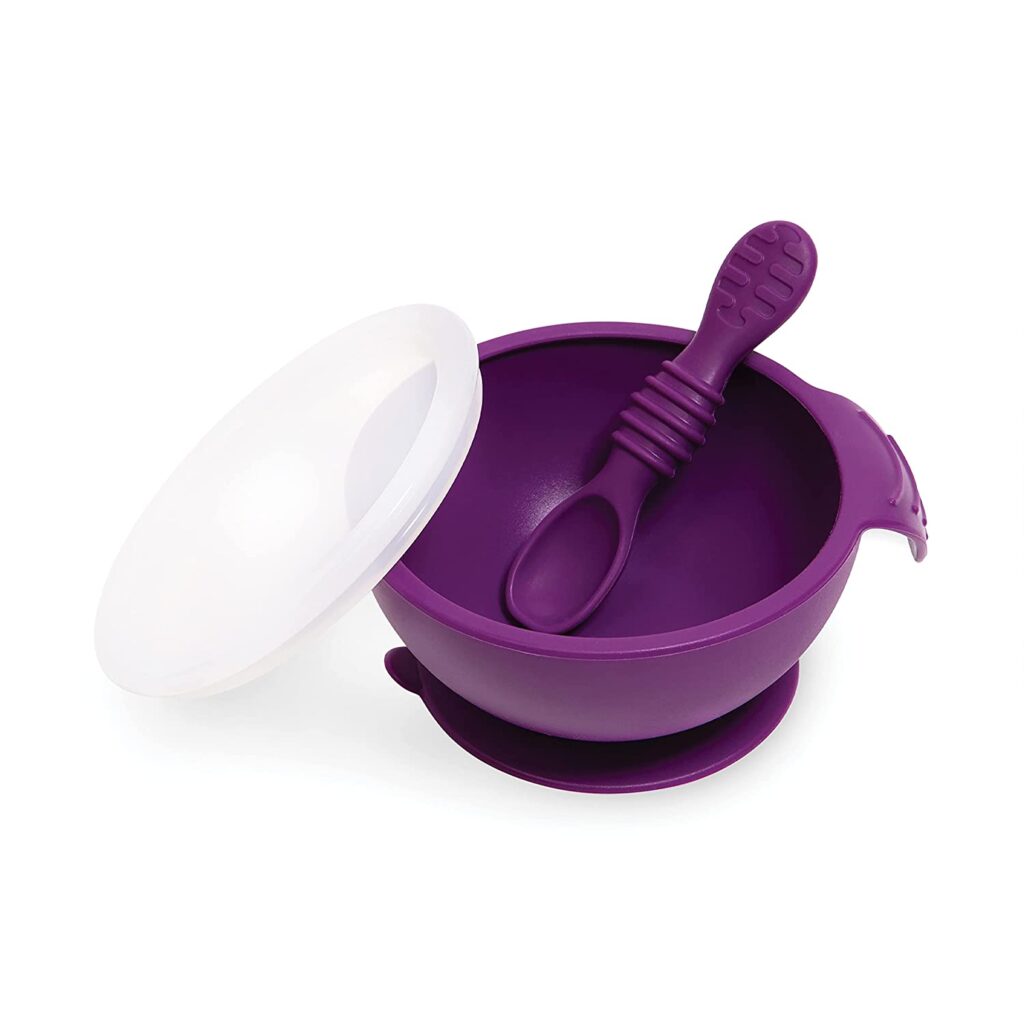
Tools Needed
These tools will make it a lot easier for you to serve apricots to your baby. For more of my favorite kitchen tools, make sure to check out my shop.
Step-by-Step Puree Instructions
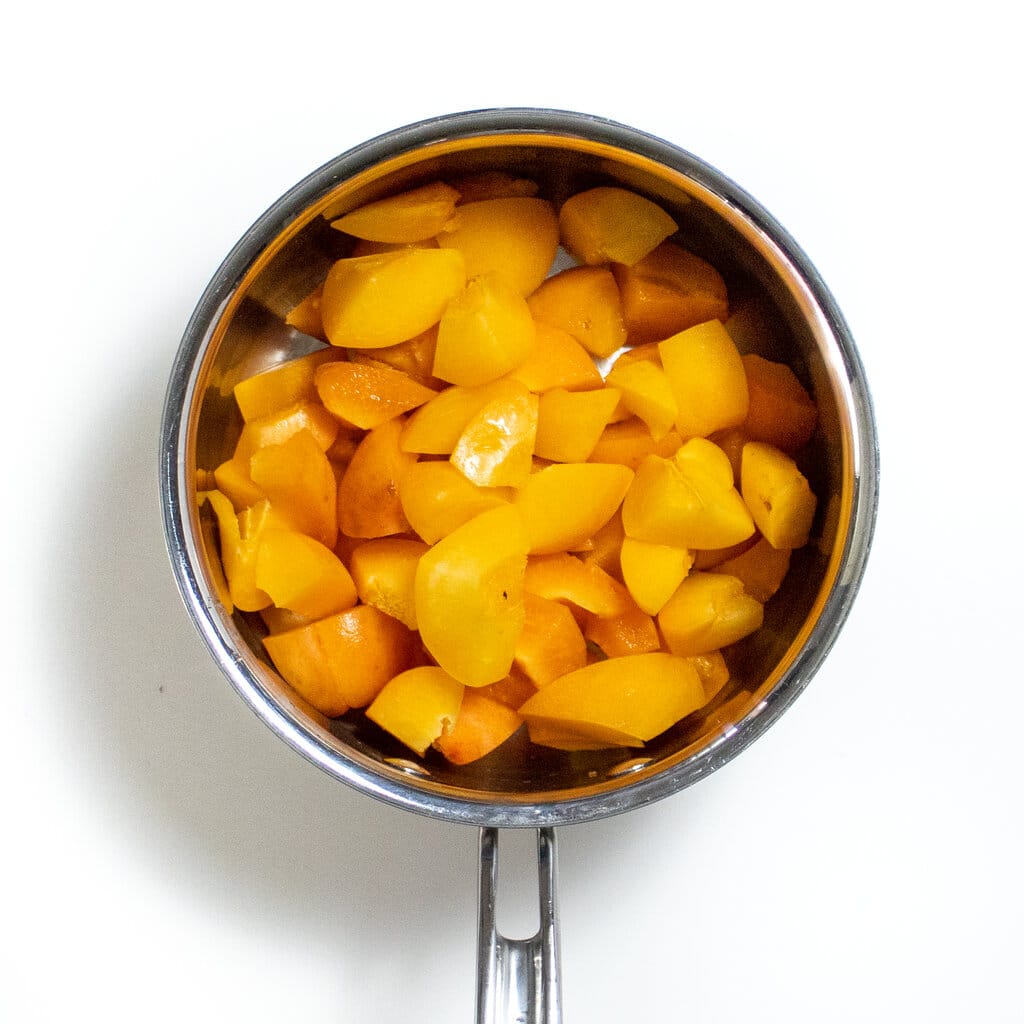
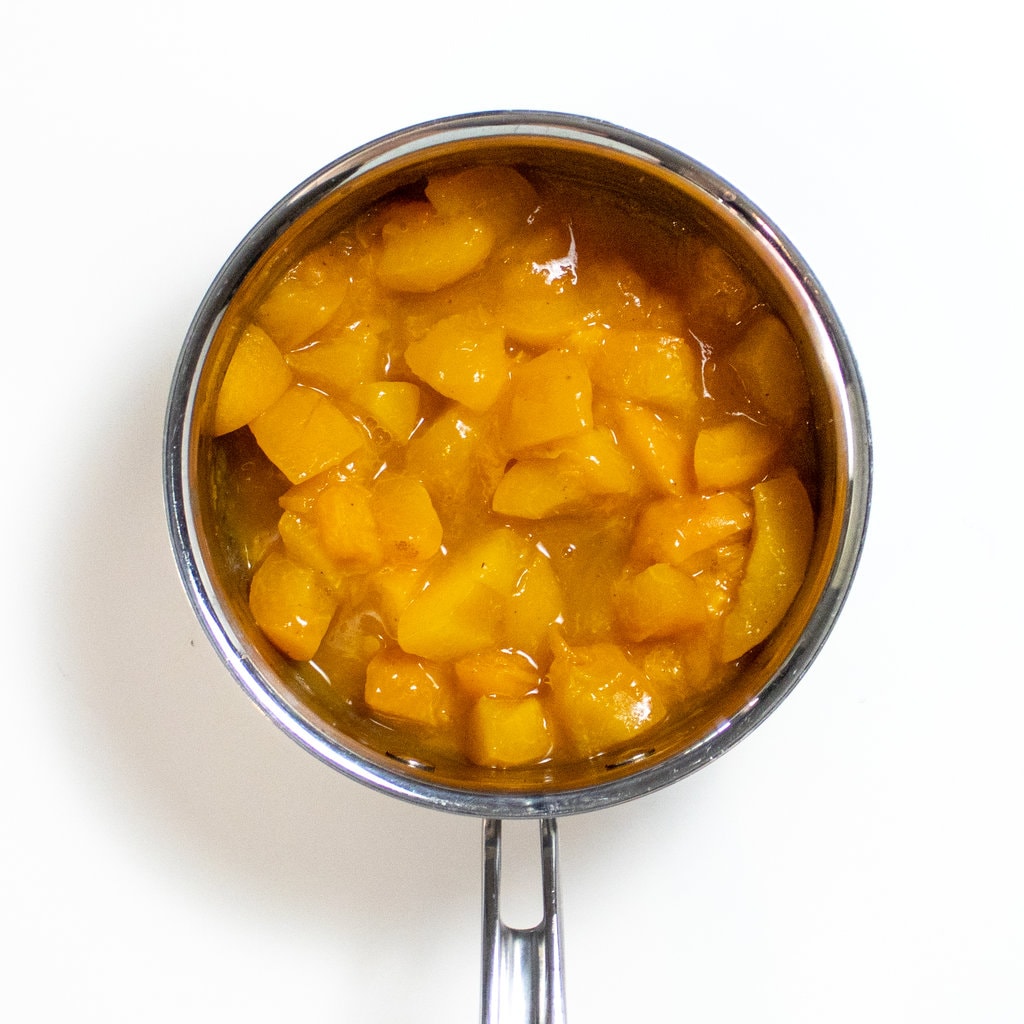
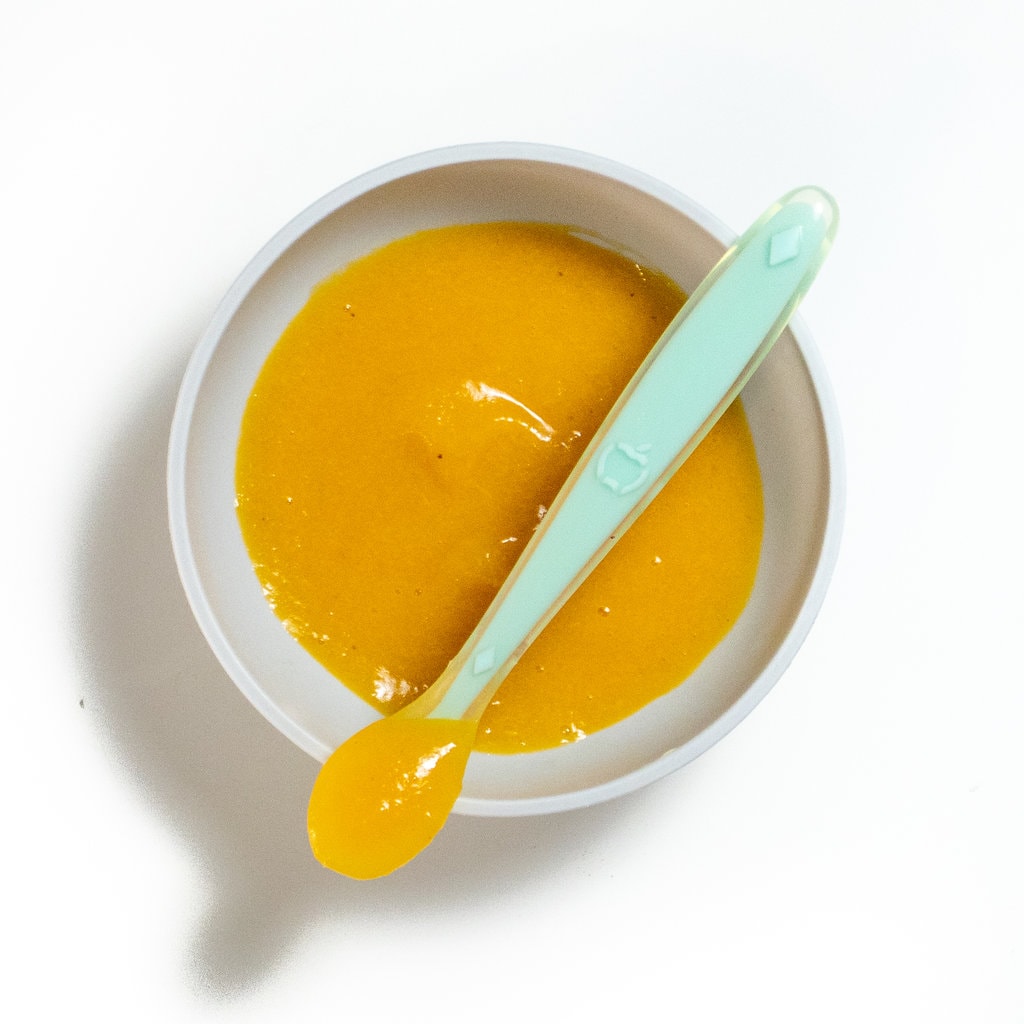
Apricot Puree
To make apricot puree, simmer the apricots, a pinch of cloves (or cinnamon), and a bit of water until tender, then let cool slightly. Puree in a blender until creamy, and serve to your baby.
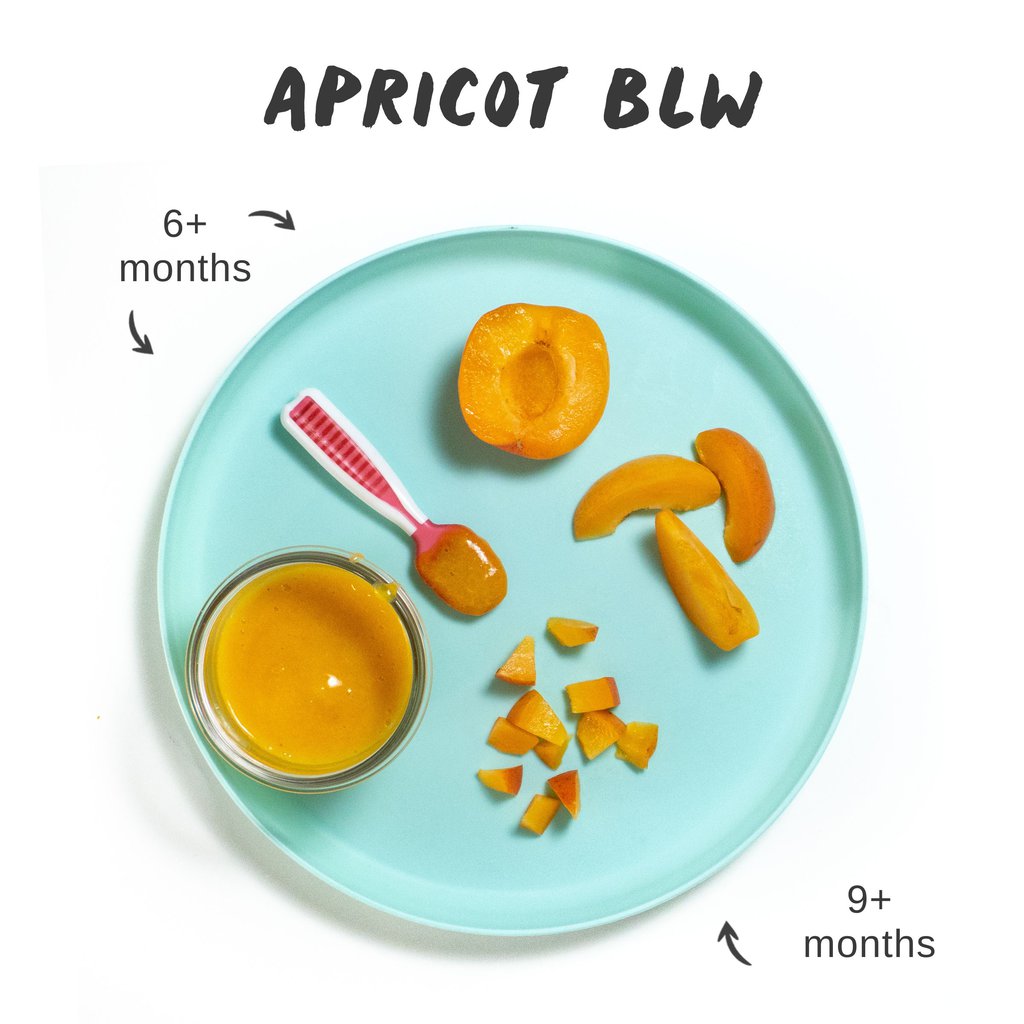
Apricot for Baby-Led Weaning
Apricots are a great food for your baby to self-feed, whether for baby-led weaning, which happens around 6 months of age, or during the finger foods stage at 9 months.
Halved, ripe (6-9 months): Cut soft, ripe apricots in half and remove the pit. Baby can pick up this larger piece easily. You can also leave the skin on (it’s edible). Or try gently steaming and serving the apricot this way, halved or mashed.
Sliced or diced (9-12+ months): Serving smaller slices or bite-sized pieces of apricots will allow your baby to practice using their pincer grasp, which is developing at this age. You can also roll apricots in finely crushed or ground foods, such as nuts, cereal, shredded coconut, or hemp seeds to help your baby grasping it.
Halved or whole (12-24 months): Depending on your toddler’s skill level, you can try offering either halved apricots (pit removed) or a whole apricot (with pit) so they can practice taking appropriately sized bites, chewing, and swallowing. You can keep the skin on or peel it. If offering a whole apricot, it’s best to model eating one yourself so that you can show them how to eat around this part.
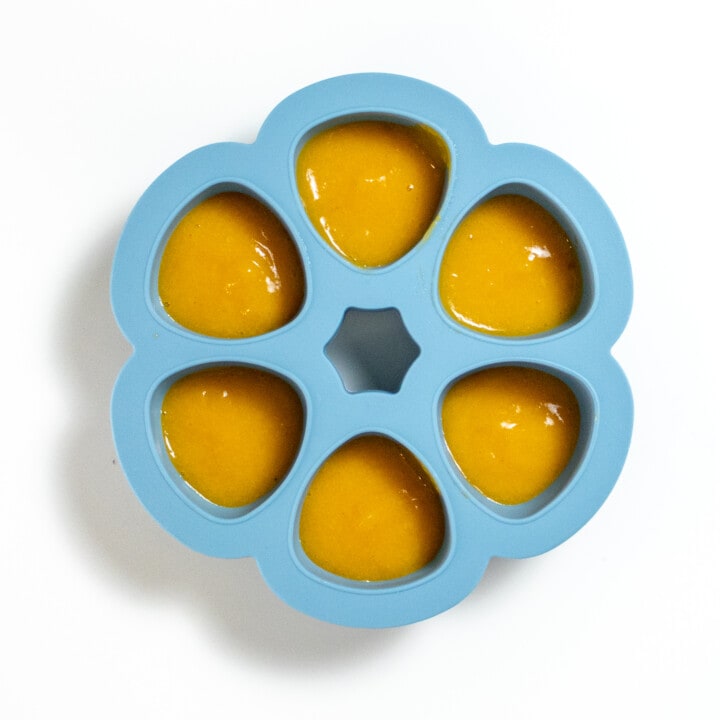
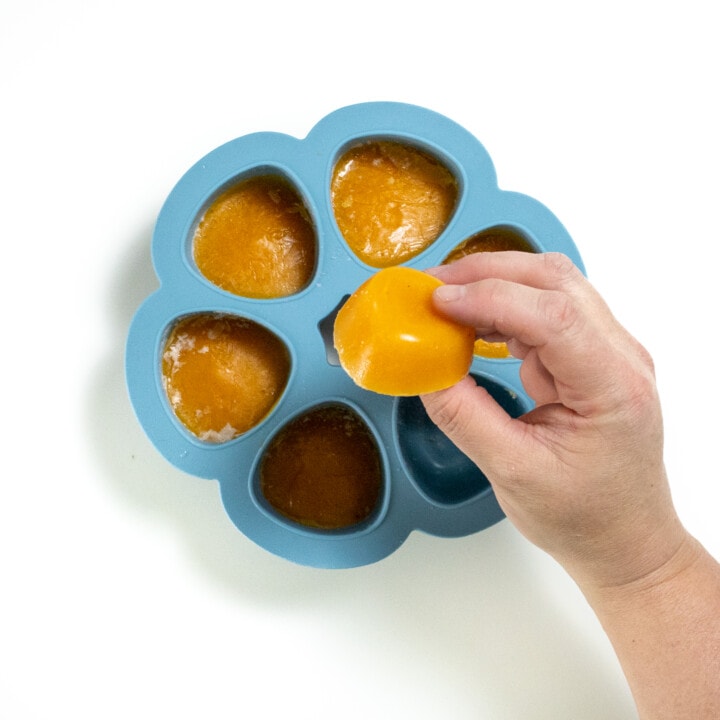
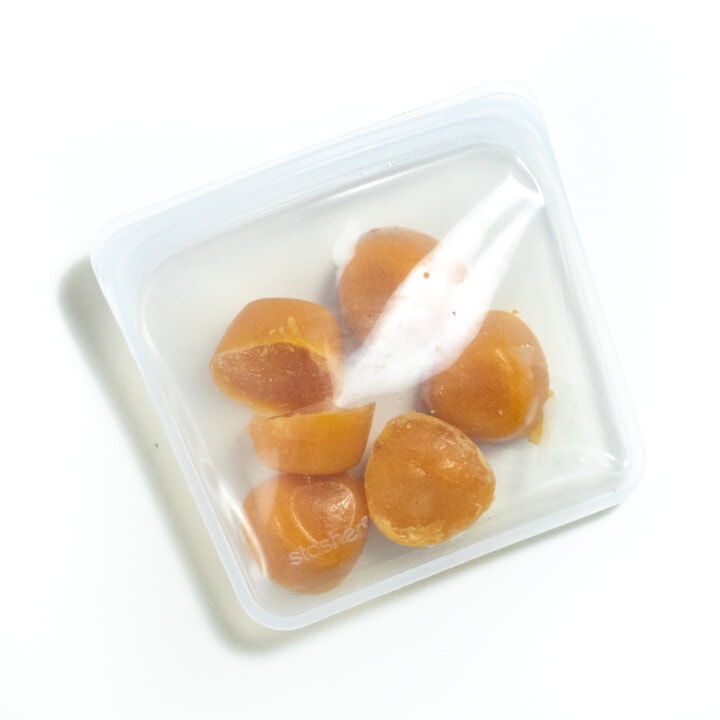
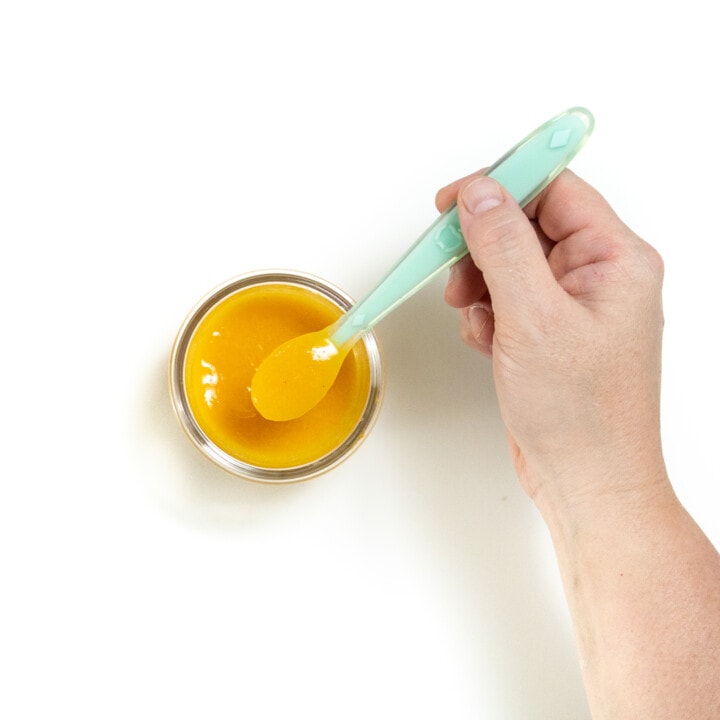
Storage Instructions
Apricot Puree
Refrigerator
You can store it in an airtight container in the fridge for up to 4 days.
Freezer
This puree can be frozen for up to 4 months.
- Spoon puree into a freezer storage container – do not overfill.
- Place the lid on the storage container or cover it with a piece of saran wrap and label it with the date and recipe name.
- Place the tray into the freezer and let freeze completely – preferably overnight.
- Pop out the baby food cubes and place them in a zip-lock baggie or stasher bag – don’t forget to re-label the baggie or stasher bag for future reference.
Baby-Led Weaning
You can store cut apricots in an air-tight container in the fridge for up to 2 days.
Combination Purees
While Apricot Baby Puree is great by itself, it’s also super easy to mix and match with other nutrient-dense baby food purees. Give these fun flavor combos a try!
More Apricot Recipes
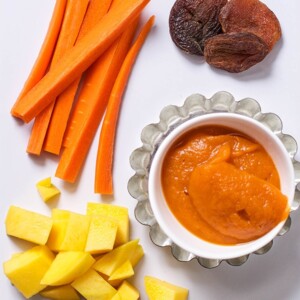
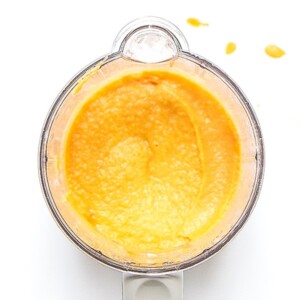
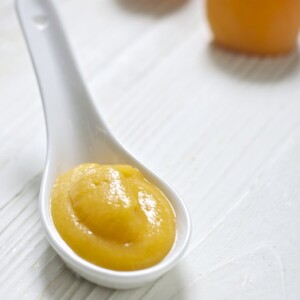
Expert Feeding Tips
- Pureed and mashed apricots are also great for adding to yogurt, oatmeal, and other pureed fruits and veggies.
- If you choose to cook apricots for your baby, the easiest method is to steam or simmer them in a little water for a few minutes.
- Choose fresh or frozen apricots instead of canned, if possible. Canned apricots can be higher in added sugars. If choosing canned, look for ones that are labeled “no-added sugar.” However, you can also drain and rinse canned apricots to reduce the added sugar.
- Dried apricots (or any dried fruits) are a choking hazard for babies and younger toddlers, so we recommend waiting to serve whole dried apricots until your child is very efficient in taking small bites from a whole piece and chewing thoroughly.
- To remove the pit from a fresh apricot, run a sharp knife all the way around the natural ‘dimple’ of the fruit. Twist the two halves in opposite directions, separate them, and remove the pit.
Apricot Puree
- 6 ripe apricots, pitted and roughly chopped
- pinch cloves, or cinnamon
- 2 tbsp water
Apricot for Baby-Led Weaning
Apricot Puree
-
In a small saucepan, place the apricots, cloves, and water.
-
Cook over medium-low heat for 10 minutes or until the apricots are tender. Let cool slightly.
-
Transfer the apricots to a blender of food processor. Turn on the blender or food processor and puree for 1-2 minutes on medium. If the puree is too thick, add 1/4 cup of the reserved liquid at a time, until you achieve desired consistency.
Apricot for Baby-Led Weaning
-
Serve to your baby in an age-appropriate way – either cut in half off of the pit, slices, or chopped into smaller pieces. You can also puree or mash the apricot and serve to your baby on a self-feeding spoon.
Storage: you can store the apricot puree in an air-tight container in the fridge for up to 4 days or in the freezer for up to 4 months. You can store the apricot pieces in an air-tight container in the fridge for up to 2 days.


